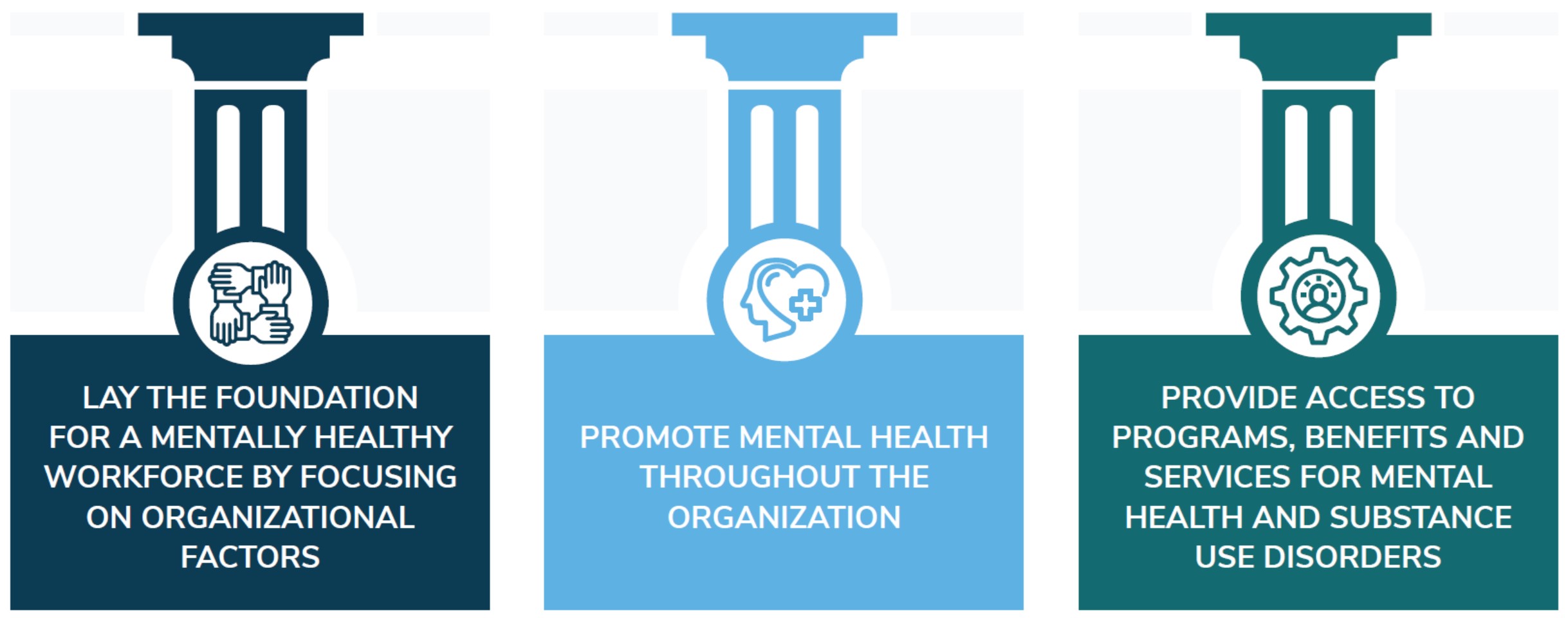July 18, 2023
Supporting workforce mental health has been a priority for large employers for years, but never more so than during the COVID-19 pandemic, as employees and their families experienced myriad challenges impacting their emotional well-being. Although the acute crisis of the pandemic is behind us, numerous and serious mental health challenges remain, creating an imperative for employers to transform their support of mental health into a cohesive and comprehensive strategy – one that assists every employee, from those who are thriving to those with mental health conditions and substance use disorders and everyone in between.
74% of employers will expand their mental health benefits and well-being strategy over the course of the next 3-5 years, more than any other dimension of well-being.1
Developing a comprehensive mental health strategy is good for employees and for business, as poor mental health leads to higher health care costs and can have a detrimental impact on employee engagement. The burning platform is clear: The need for employer support across the mental health continuum is high, employers are in a unique position to offer this support and can benefit tremendously from having a mentally healthy workforce.
Creating a comprehensive mental health strategy is bigger than just benefits. A growing consensus among health-focused entities like the World Health Organization, the U.S. Surgeon General’s Office and leading voices in mental health, including the team behind the Mental Health at Work Index™, affirm that a mental health strategy is comprised of multiple components or pillars, including the following:

Each of these pillars cannot stand alone and works best when implemented in concert. They require company-wide engagement and coordination, especially among leaders across the organization and those with responsibility for benefits and well-being.
What do these pillars represent, and how do they work together? Business Group on Health’s resource, Engineering Mental Health: Building a Strategy from the Ground Up, provides an in-depth review of each pillar, including their importance, the role that benefits and well-being leaders have in advancing them, actionable solutions for implementation, and areas of opportunity for measurement, integration and accountability within and across each of the three pillars.
Pillar 1: Lay the Foundation for a Mentally Healthy Workforce by Focusing on Organizational Factors
Work can be a protective factor for mental health by providing the space and opportunity for employees to make positive connections, feel a sense of belonging and experience purpose and fulfillment.2 On the other hand, work can be a risk factor for poor mental health. Thus, the first pillar of a comprehensive mental health strategy focuses on ways organizations can incorporate employee mental health into workplace policies, practices and norms. These include things like leadership buy-in for mental health, leadership training and a consideration of how work/life balance and flexibility, diversity, equity, inclusion and belonging and social connection influence and can be structured to create a mentally healthy culture.
Pillar 2: Promote Mental Health Throughout the Organization
Assessing and addressing organizational factors to support mental health is necessary but not sufficient to develop a comprehensive strategy. Actively promoting mental health throughout the year, for employees at all levels, through a variety of methods is critical to creating a workplace where employees feel safe and supported no matter where they are on the mental health continuum. Pillar 2 emphasizes how to enhance a mentally healthy work culture by championing positive mental health through things like anti-stigma campaigns, manager training, programs and initiatives that prevent burnout and support employees in managing stressors, and ways to engender positive emotions.
Pillar 3: Provide Access to Programs, Benefits and Services for Mental Health and Substance Use Disorders
Employers play a crucial role in supporting employees and family members with mental health conditions and substance use disorders, particularly in the U.S. where employers provide the majority of health care benefit coverage. As employers continue to invest in and refine their mental health and substance use disorder benefits, the final pillar focuses on ways to enhance their comprehensiveness and align them with the best evidence, as well as solve for challenges, including increasing access and filling potential gaps.
The time is now to transform the groundswell of support for mental health into a comprehensive employer strategy that addresses the mental health of all employees. A comprehensive strategy will weave together efforts to: 1) systematically improve organizational factors that may impact employee mental health, 2) promote positive mental health among the workforce and 3) provide robust benefits to treat mental health conditions and substance use disorders. Importantly, employer efforts to develop a comprehensive strategy should be ongoing to account for the fact that the organization and the workforce is always evolving. Routine assessment of the strategy and its alignment with employee needs will be critical as employers continue to forge a path to better mental health.
Business Group on Health is a Founding Corporate Council member of Mental Health at Work Index™ - an assessment tool for employers. The Business Group wishes to acknowledge its participation as a Founding Corporate Council member. Our participation influenced the development of certain aspects found in Engineering Mental Health: Building a Strategy from the Ground Up.

Executive Summary
-
IntroductionEngineering Mental Health: Building a Strategy from the Ground Up
-
Executive SummaryEngineering Mental Health: Executive Summary
-
Full GuideEngineering Mental Health: Full Guide
-
Pillar 1Pillar 1: Lay the Foundation for a Mentally Healthy Workforce by Focusing on Organizational Factors
-
Pillar 2Pillar 2: Promote Mental Health Throughout the Organization
-
Pillar 3Pillar 3: Provide Access to Programs, Benefits and Services for Mental Health and Substance Use Disorders
More Topics
Articles & Guides- 1 | Business Group on Health and Fidelity Investments. What’s the path forward for well-being? Results of the14th Annual Employer- Sponsored Health and Well-being Survey. May 2023. https://www.businessgrouphealth.org/resources/14th-annual-health-and-well-being-survey-2023. Accessed May 25, 2023.
- 2 | Office of the U.S. Surgeon General. The U.S. Surgeon General’s Framework for Workplace Mental Health & Well-Being. 2022. https://www.hhs.gov/sites/default/files/workplace-mental-health-well-being.pdf. pdf. Accessed June 28, 2023.
